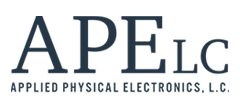APELC has recently observed a significant convergence between venture capital-funded fusion energy ventures and the established work of the Department of Energy (DOE). This evolving landscape presents both opportunities and challenges for supply chain companies like APELC, particularly in sectors related to pulsed power, nuclear effects testing, and precision manufacturing.
Our growing interest in this dynamic interplay was sparked by discussions with industry experts like Dr. Greg Van Dyk of Altrusion. His insights, drawn from extensive experience with the NNSA, DTRA, and the fusion industry, highlighted the transformative impact of billions of dollars flowing into high-yield neutron-producing machines. This investment is reshaping the fusion ecosystem and creating new avenues for innovation. When APELC asked Greg about this, he was clear in what he saw happening. “The ability to tap capital markets to develop defense capabilities versus getting paid on a cost plus fixed fee is a game changer. There are both pros and cons, but mostly pros in my opinion.”, said Van Dyk, whose company Altrusion was created to help streamline the fusion energy supply chain.

Recently, APELC had the opportunity to gain firsthand insights into this evolving landscape through two key visits. First, our team visited the Los Alamos Neutron Science Center (LANSCE) in Los Alamos, NM. This historic 800 MeV linear accelerator facility has been a cornerstone of national scientific research for over 50 years, contributing significantly to nuclear effects testing, radiography, and isotope production.
Subsequently, APELC attended the FusionXInvest conference in Silicon Valley, a pivotal event for connecting investors with fusion companiesi and for supply chain companies like APELC to meet with decision makers in the fusion industry. This conference provided a comprehensive overview of the industry’s financial landscape, revealing the substantial growth in venture capital funding over the past five years, totaling approximately $12.5 billion.
The discussions at FusionXInvest highlighted a growing trend: fusion companies are actively pursuing diverse revenue streams beyond net-gain energy production. This strategic diversification, exemplified by companies like Shine Technologies and Fuse Energy Technologies, has significant implications for the broader industry.
Shine Technologies, for instance, has successfully pivoted to the production of lutetium-177, a critical medical isotope, demonstrating the potential for fusion companies to generate revenue while advancing their core technology. Similarly, Fuse Energy Technologies has secured an AFWERX SBIR contract for nuclear effects testing, leveraging its innovative impedance-matched Marx generator (IMG)-based system.
These developments raise important questions about the future of government-funded neutron sources and their ability to compete in a rapidly evolving market driven by private investment. APELC recognizes the critical role of DOE labs like LANSCE, which provide unique user assets, expertise, and secure facilities that are essential for balancing scientific advancement with national security.
However, the influx of venture capital into fusion is undeniably reshaping the landscape, mirroring trends seen in other high-technology sectors like space and artificial intelligence. This public-private partnership model offers significant potential for accelerating innovation and developing dual-use technologies.
APELC believes that this evolving landscape presents both challenges and opportunities. We are committed to staying at the forefront of these developments and collaborating with industry and government partners to navigate this dynamic environment.
We invite our readers to join the conversation. What are your perspectives on the interplay between venture capital and government-funded research in the fusion industry? How do you see these trends impacting the broader supply chain?
